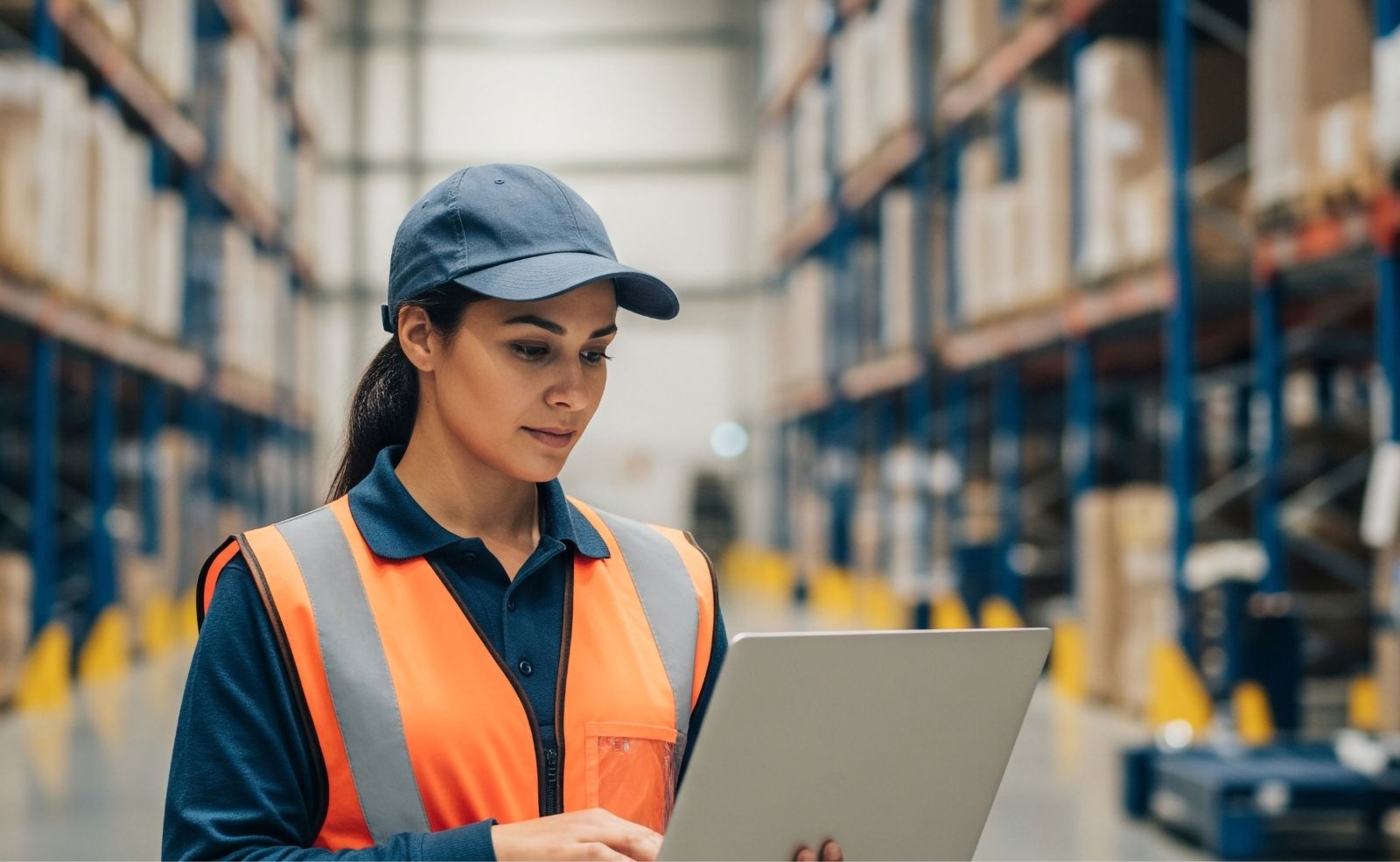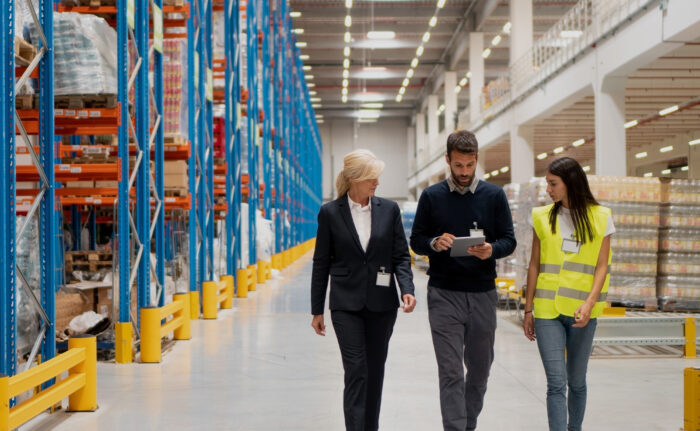
Today’s consumers expect faster, more reliable, and increasingly personalized delivery experiences—putting pressure on logistics teams at every level. Last-mile delivery software is no longer a futuristic luxury; it’s an essential link in a responsive supply chain. For operators looking to boost efficiency, control costs, and delight customers, leveraging the right technology for last-mile delivery is a strategic priority.
To better understand the importance of last-mile delivery, this article will cover:
- What is Last-Mile Delivery?
- Why is Last-Mile Delivery Important?
- How Does Last-Mile Delivery Software Work With a WMS?
- Key Features For Last-Mile Delivery Software
- Benefits of Last-Mile Delivery Software
- Challenges to Avoid in Last-Mile Delivery
- How to Choose the Right Last-Mile Delivery Software For Your Needs
What is Last-Mile Delivery?
Last-mile delivery is the final step of the order journey: transporting goods from a warehouse, fulfillment center, or transport hub to the customer’s doorstep or a designated pickup point. This stage comes with outsized importance—it directly shapes customer experience, brand perception, and the overall cost to serve. From city centers to remote destinations, achieving precise, on-time delivery in this phase poses unique operational challenges.
Why is Last-Mile Delivery Important?
The last mile is typically the most complex and expensive segment of the delivery chain—accounting for more than half of total shipping costs in many industries. Consumers’ expectations for speed, transparency, and convenience set a high bar, while businesses must contend with traffic, rising labor costs, and unpredictable demand. Done well, last-mile delivery becomes a powerful differentiator—fueling customer loyalty, repeat purchases, and positive reviews.
Recent data shows just how critical speed has become. According to Supply Chain 24/7, a survey by Radial found that 62% of shoppers consider fast shipping a deciding factor when comparing retailers. Expectations are shifting quickly, too—30% of shoppers now say 2–3-day shipping is the standard, up from just 19% in 2023.
Retailers are taking notice. Target, for example, announced plans to roll out next-day delivery in 35 major U.S. metro areas by the end of October—just in time for the holiday season. “Speed matters more than ever to consumers, so we’ve prioritized expanding faster delivery across the country,” said Gretchen McCarthy, Target’s Executive Vice President and Chief Supply Chain & Logistics Officer.
How Does Last-Mile Delivery Software Work With a WMS?
Integrating a warehouse management system into the last-mile delivery system is a small step companies can take to unlock powerful efficiencies. Orders are intelligently picked, packed, and staged with delivery windows and routing in mind. As trucks are loaded—ideally in reverse delivery order—drivers receive optimized routes and updates directly on their mobile devices. Real-time delivery status, proof of delivery, and exception alerts flow back into the WMS, ensuring inventory is updated and all stakeholders maintain end-to-end visibility.
Key Features For Last-Mile Delivery Software
Modern last-mile delivery solutions are feature-rich, offering businesses the tools they need to manage complexity and scale operations. Essential features include:
Last-Mile Delivery Software Feature #1: Route Optimization
AI-driven calculations for the most efficient, real-time delivery paths, managing both the pickup and drop-off of shipments with full visibility.
Last-Mile Delivery Software Feature #2: Automated Dispatching
Seamless assignment of stops and orders based on driver location, load, and availability.
Last-Mile Delivery Software Feature #3: Live Tracking
Track last-mile deliveries and fleet movements in real time with advanced AVL technology and provide real-time status updates for both internal teams and consumers.
Last-Mile Delivery Software Feature #4: Proof of Delivery (POD)
Digital signatures, photos, and contactless delivery confirmation.
Last-Mile Delivery Software Feature #5: Exception and Delay Management
Automated alerts and workflows for issue resolution.
Last-Mile Delivery Software Feature #6: Integration Capabilities
Tight coupling with WMS, TMS, and ERP systems for coordinated, data-driven workflows.
With these powerful features in place, last-mile delivery software does more than streamline operations—it delivers measurable business value. From cutting costs to improving customer satisfaction, the benefits are clear.
Benefits of Last-Mile Delivery Software
Implementing advanced delivery software unlocks tangible value across the supply chain, including:
Last-Mile Delivery Software Benefit #1: Cost Savings
Smart routing and efficient loading reduce fuel and labor costs, savings that can be passed on to customers.
Last-Mile Delivery Software Benefit #2: Increased Shipment Visibility
Real-time dashboards and tracking elevate operations management and lead to increased customer trust.
Last-Mile Delivery Software Benefit #3: Improved Customer Satisfaction
Faster, accurate deliveries and proactive communication help turn first-time buyers into loyal advocates.
Last-Mile Delivery Software Benefit #4: Productivity and Scalability
Automation allows businesses to handle more orders while onboarding new drivers or routes seamlessly.
Last-Mile Delivery Software Benefit #5: Reduced Paperwork
Electronic POD minimizes manual errors and simplifies documentation.
Together, these benefits show why last-mile delivery software is becoming a must-have for modern supply chains. But while the payoff is clear, achieving it isn’t without obstacles—which makes understanding the challenges of last-mile delivery the next critical step.
Challenges to Avoid in Last-Mile Delivery
Last-mile delivery can be a major differentiator for customer satisfaction—but it’s not without its hurdles. As Amit Levy, EVP of Sales and Strategy at Made4net says, “The last mile is where promises meet reality—and that’s where most companies feel the squeeze.”
Some common challenges include:
- Traffic and route disruptions: Even the best-planned routes can be thrown off by congestion or last-minute order changes.
- Failed deliveries: Wrong addresses, missed time slots, or unavailable customers aren’t just frustrating—they cut into margins.
- Siloed data: When systems don’t talk to each other, delays, lost inventory, or order mix-ups can quickly pile up.
- Rising costs: Labor, fuel, and vehicle maintenance can spiral if you’re not constantly optimizing operations.
- Customer expectations: “Customers expect real-time updates, not vague guesses,” Levy notes. Missing ETAs or slow communication can erode trust fast.
It’s worth remembering that last-mile delivery software isn’t a magic fix. But it does give teams the flexibility to pivot on the fly, so when the unexpected happens, operations can bounce back—and customers stay happy.
How to Choose the Right Last-Mile Delivery Software For Your Needs
Choosing the right last-mile delivery software begins by having a clear understanding of both your operational scale and your long-term business objectives. Operations need to prioritize solutions that can easily integrate with existing systems, such as a WMS, TMS, or ERP, to access seamless data flow and coordinated workflows as your needs evolve. Scalability should also be top of mind, ensuring your software can accommodate fluctuations during peak seasons and support growth without disruption.
At the heart of any robust solution are features like live tracking, dynamic routing, and automated dispatch—tools that empower dispatch teams and drivers alike to perform at their best. Equally as important is ease of use, translating not only into faster onboarding and smoother day-to-day adoption, but also fostering long-term engagement across your workforce.
Finally, assessing the vendor’s track record, ongoing support, and willingness to adapt as your business changes helps set the stage for a partnership that delivers real, measurable value over time. Taking the time to evaluate several platforms, request demonstrations, and confirm technical fit will ensure your investment drives success on the last mile, both today and in the future.
The Case for Last-Mile Delivery
Last-mile delivery is a true competitive advantage—driving customer loyalty and long-term growth. With Made4net’s DeliveryExpert, you can streamline scheduling, track every order in real time, and verify deliveries with confidence. The result? Happier customers, lower costs, and greater efficiency.Book a demo to see it in action.


